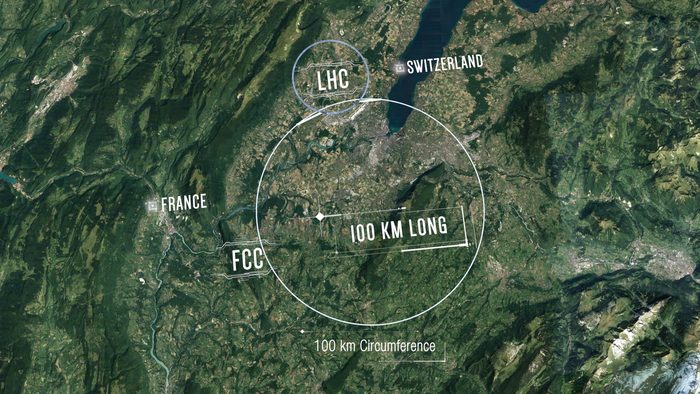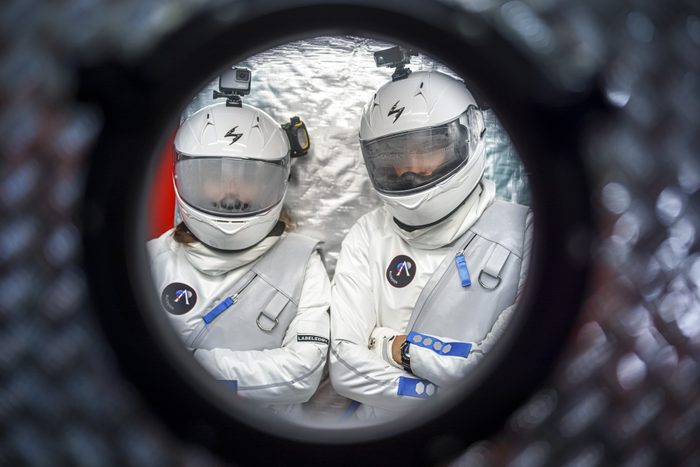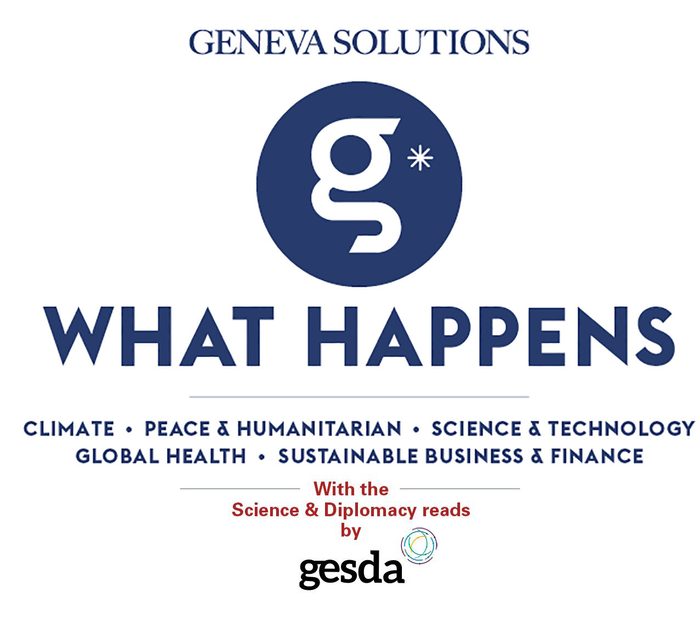Hello, this is Achintya and today we travel into the future and deep underground below Geneva, to look at plans being made at CERN for a new accelerator that would encircle the city.
We then take a stop at EPFL where students have made a 3D printer capable of printing ulta-thin structures measuring a fraction of a human hair.
And we finally arrive at the Grimsel pass between Valais and Bern where an international group of students is spending eight days isolated underground in a model of a lunar station. |
|
Science & Technology News
|
|

Image: CERN
|
|
Here’s what else is happening
|

Students Eleonore Poli (left) and Julien Corsin (right) pose at the entrance of their base 450 metres under the mountain, prior to the launch of their eight-day mission. Image: Valentin Flauraud/Keyston
|
|
🧑🚀 Bringing the moon to the Earth.
Six students from Switzerland, France, the UK and Chile will spend eight days in complete isolation from the rest of the world, in an underground “lunar station” under the Grimsel pass, created by EPFL’s Space@yourservice association. Their mission is to carry out tests, both scientific and social, and will be supported by colleagues “on Earth” who will be in 24-hour contact with the team.
Le Temps (FR)
|
|

An example of a small structure printed by the new machine. Image: Alain Herzog/EPFL
|
|
🖨️ EPFL’s home-made 3D printer.
When researchers at EPFL found commercial 3D printers outside their budget, they turned to their students and engineers to build one from scratch. The new device, which not only saved money but was also tailored to their requirements, can print fine structures using ultra-thin filaments within minutes. To put the size of a micron into context, an average human hair is approximately 70 microns while a human red blood cell is about five microns.
EPFL (EN)
|
|
|
📌 14 July | Switzerland’s commitments to Agenda 2030.
The launch of the University of Geneva’s French summer classes are both a chance to learn the local language and about Switzerland’s contribution to the 2030 Agenda for Sustainable Development, through the voice of the delegate to the Federal Council on the matter.
UNIGE (FR)
|
|
|
GS news is a new media project covering the world of international cooperation and development. Don’t hesitate to forward our newsletter!
Have a good day!
|

|
|
Avenue du Bouchet 2
1209 Genève
Suisse
|
|
|
|










